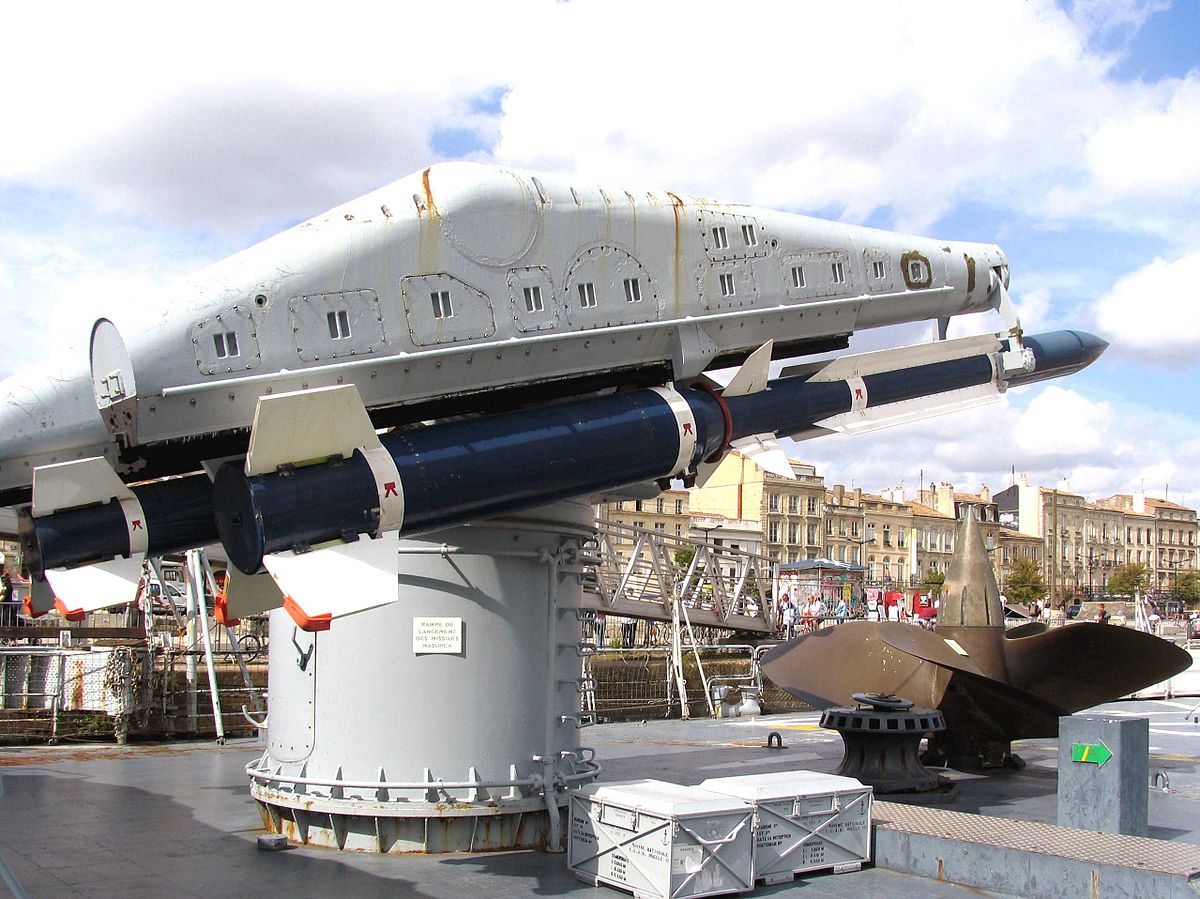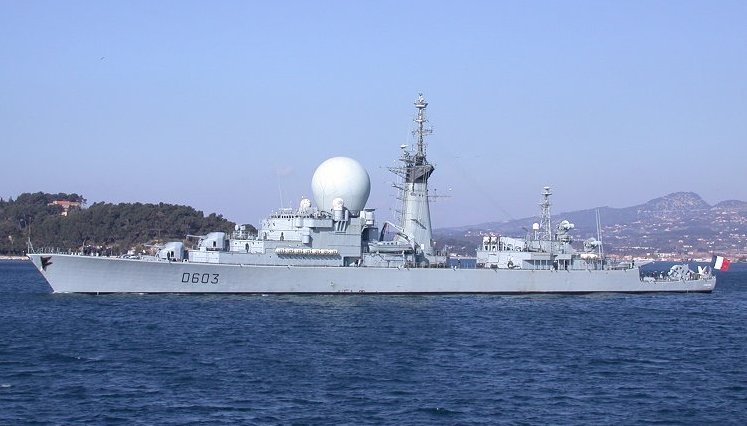NOMISYRRUC
ACCESS: Top Secret
- Joined
- 28 September 2008
- Messages
- 2,338
- Reaction score
- 3,776
Lemming! See that cliff! Do your duty!
Earlier this year Alternatehistory.com had a thread named WI: County Class Destroyers with RIM-24 Tartar? and this was Post Number 101. It was my proposal for a large guided missile destroyer armed with Terrier (Batch 1) and Standard SM-1/ER (Batch 2) with all gas turbine propulsion that was built instead of the real world County class and Type 82.
Earlier this year Alternatehistory.com had a thread named WI: County Class Destroyers with RIM-24 Tartar? and this was Post Number 101. It was my proposal for a large guided missile destroyer armed with Terrier (Batch 1) and Standard SM-1/ER (Batch 2) with all gas turbine propulsion that was built instead of the real world County class and Type 82.
Alternative County class Guided Missile Destroyer
Version 2.0
Replacing Post 86 on Page 5
Eight ships were built in both timelines as follows:
However, they weren't the same as the OTL ships.
The rest of the armament was the same as OTL. That is four 4.5" guns in two Mk 6 turrets and two Sea Cat launchers.
- The TTL version had eight Metrovick G.6 gas turbines producing 60,000shp arranged in two units of four which is why it was called Combined Gas and Gas (COGAG).
- Seaslug was replaced by Terrier in the first four ships (Batch 1) and Standard SM-1/ER in the last four ships (Batch 2).
- The GMLS Mk 10 launcher was fed by three 20-round magazine rings holding a mix of 60 SAMs and ASROCs - double the number that the OTL ships carried.
- Two SPG-55 target indicator radars were fitted instead of one Type 901 so it could engage two targets at a time.
- One SPS-39 radar was fitted to the Batch 1 ships instead of a Type 965 with the AKE-1 aerial.
- One SPS-48 radar was fitted to the Batch 2 ships instead of a Type 965 with the AKE-2 aerial.
- The arrangement of the hangar and flight was better than the OTL ships, which allowed two Wasp or one Sea King size helicopters to be accommodated, but the ships usually operated one Wessex helicopter.
- Six 21" torpedo tubes for British 21" anti-submarine torpedoes in single fixed mountings were planned for the OTL ships, but they were not fitted.
- The TTL ships were fitted with six 12.75" torpedo tubes for American Mk 44 anti-submarine torpedoes in two triple Mk 32 mountings.
In common with OTL they were fitted with the Type 184 sonar. Batch 1 ships had the Comprehensive Display System and the Batch 2 ships had ADAWS Mk 1.
The TTL County might have required a larger hull to accommodate the changes to the armament and machinery, but steel is cheap and air is free, so the increase in the cost of each ship would have been negligible. The operating cost might have been less because the all gas turbine machinery of the TTL ships might have allowed the ships to have smaller crews.
In both timelines the RN wanted each strike carrier to be escorted by four guided missile destroyers. The number of strike carriers was to be reduced from five at the beginning of the 1960s to three in the 1970s. Therefore, there was a requirement for 12 GMDs in the 1970s. In common with OTL a Type 82 GMD was designed, but it was armed with Standard SM-1/MR and had all gas turbine machinery. However, it was decided to build a third quartet of Counties because it was armed with the longer range Standard SM-1/ER.
The Defence White Paper of February 1966 resulted in a radical change of plan. The new class of aircraft carriers was cancelled and the existing ships were to be withdrawn by 1975. Therefore, the plan to build four County class Batch 3 was abandoned because there was now no need for large guided missile destroyers because there would be no aircraft carriers for them to escort.
According to Naval-history.net 3 out of 4 Batch 1 ships had long refits between 1968 and 1973 as follows:
ITTL the long-lead items ordered for DLG.10 to DLG.12 were used to upgrade these ships to Batch 3 standard. That is Standard SM-2/ER replaced Terrier, SPS-48 replaced the SPS-39 and ADAWS Mk 2 replaced the CDS.
In Version 1.0 (Post 86 on Page 5) DLG.09 was HMS Gloucestershire the sole County class Batch 3 instead of the OTL Type 82 destroyer HMS Bristol. However, I have since decided that DLG.09 would not be built at all. Instead Swan Hunter would build a Type 81 frigate in place of Bristol and the HMS London would be refitted to Batch 3 standard with the Standard SM-2/ER system, SPS-48 radar and ADAWS Mk 2 that had already been ordered as long-lead items for DLG.09.
Between February 1966 and the end of 1974 the MoD (Navy) planned that each ship would remain in service for 20 years. All eight ships were to be fitted with STWS anti-submarine torpedo tubes. The Batch 2 ships would also be refitted to fire SM-2 missiles, the Type 184 sonar would be replaced by Type 2016 and ADWAS would be updated.
Then the Yom Kippur War and the Oil Crisis happened which led to the Mason Defence Review of 1974-75 which amongst other things cut the number of "frigoyers" from about 70 to about 60.
This was bad news for the County class. The TTL ships were more capable than the OTL ships because their main armament had been kept up to date and they could engage twice as many targets at a time, but they were still expensive to run on account of their large crews. Furthermore, 14 Type 42 GMDs were under construction and more were planned. The "Post-Mason" fleet was to have about 60 "frigoyers" and a third of them would be guided missile ships. Therefore, the new plan was to pay off the Counties as soon as enough Type 42s were available.
IOTL the fates of the nine large guided missile destroyers were as follows:
The fates of the eight guided missile ships built ITTL would be similar. However, the Batch 2 ships would have been discarded first because they fired the Standard SM-1 missile and the Batch 1 ships fired the SM-2.
- Hampshire (Batch 1) was paid off in April 1976. She was towed from Chatham to Briton Ferry to be broken up on 25th April 1979.
- Devonshire (Batch 1) was paid off on 28th July 1978 at Portsmouth and placed on Disposal List. Her proposed sale to Egypt was cancelled in 1979. She laid up at Portsmouth to await disposal in 1982 and was expended as target ship in 1985.
- London (Batch 1) fired the last broadside in the R.N. in December 1981 while on passage to Portsmouth to pay off for disposal. In January 1982 she was sold to Pakistan and renamed "Babur."
- Kent (Batch 1) was damaged by fire on 29th November 1976 whilst refitting at Portsmouth and in October 1978 arrived at Wallsend-on-Tyne for refit. She relieved Fife as Harbour Training Ship at Portsmouth in July 1980 and served as a live asset for artificer and mechanic training supporting HMS Collingwood and HMS Sultan, her machinery largely in serviceable condition (Wikipaedia). Reactivation for service in the Falklands War was seriously considered because her four 4.5" guns would have been useful for shore bombardment (source: the Little Wars website). She would be converted to fire Seaslug Mk 2 missiles as part of the re-activation which would have taken between 1 and 2 weeks. "In the event the re-activation was not proceeded with as the Navy couldn't provide a crew, so HMS Kent never joined the Task Force." According to Wikipeadia she also became a harbour training ship for the Sea Cadet Corps in 1984 and was paid off from this in 1987 to become a training hulk at Portsmouth until stricken in 1993, though she lingered on, tied up to the same pier at Portsmouth Naval Base until 1996.
- Norfolk (Batch 2) was paid off in 1981 to become the Dartmouth Training Ship (Wikipaedia). However, if this was the plan it wasn't carried out because the ship sailed for Chile with UK/Chilean crew on 17th February 1982 and was renamed "Capitán Prat".
- Antrim (Batch 2) was paid off in 1984, sold to Chile on 22nd June 1984 and renamed "Almirante Cochrane".
- Glamorgan (Batch 2) was paid off in September 1986, sold to Chile and renamed "Admiral Latorre".
- Fife (Batch 2) was the Harbour Training Ship at Portsmouth from November 1979 to July 1980 when she was relieved by Kent. She didn't take part in the Falklands War because she was refitting. (Wikipaedia says from October 1980 to December 1982.) She was converted into a cadet training ship in a refit that was completed in June 1986. However, she did not serve in this role for long because she was paid off June 1987 and sold to Chile as "Blanco Encalada".
- Bristol (the sole Type 82) was completed without much of the ECM & ESM equipment that was standard in British warships of the time. Her steam plant destroyed in a serious fire in November 1974 which was not repaired until her first major refit in 1976-77. She was finally brought up to operational status in her second major refit which lasted from 1979 to the end of 1980. The Limbo mortar was removed and UAA-1 ESM equipment fitted. The Type 1022 radar was fitted and the Ikara was removed in her next major refit which was from July 1984 to early 1986. She relieved Fife as Dartmouth training ship in September 1987 and served in that role until 1991 when she was paid off in paid off and refitted to replace Kent as Harbour Training & accommodation ship at Portsmouth.
Last edited:




